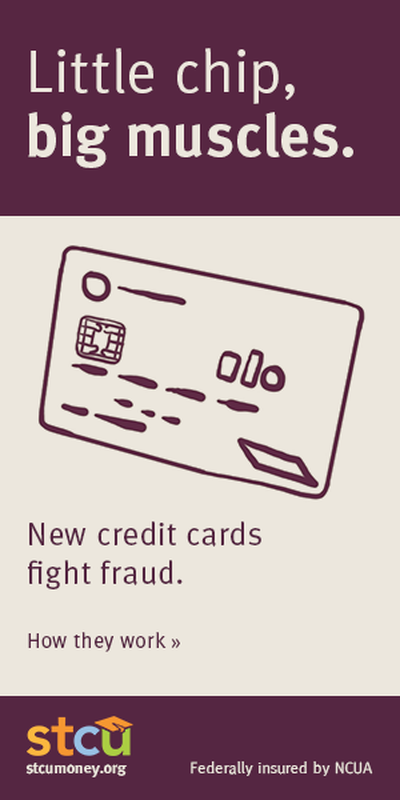Smarter cards, safer shopping

Maybe you’ve noticed a shiny new feature on your credit card.
That little microchip has a big job. Credit and debit cards with chips in them are better at protecting your private information than cards with only magnetic stripes.
“Chip cards help prevent fraud in card-present transactions – when you’re physically using your card vs. purchasing something online,” said Danny Jones, STCU’s director of remote services, including credit cards. “They’re virtually impossible to counterfeit.”
To most of us, the magnetic stripes on our debit and credit card look like … stripes. To thieves, this decades-old technology is teeming with data – names, credit card numbers, and expiration dates they can pull off to make fake cards.
Unlike a magnetic stripe, the microchip generates a unique code for every transaction. That one-time code lets the merchant make the sale, but it’s useless to thieves.
The chip cards are the standard overseas, where they’re also known as smart cards, chip-enabled cards, and EMV cards (for Europay, MasterCard, and Visa). But the United States is just transitioning to them now.
That’s why the chip cards also have magnetic strips, and why the magnetic strips still work on most terminals. But it’s safer to use the chip rather than the stripe when you can.
“Until we pass a critical mass, where enough merchants are accepting chip cards, then you’re going to see both forms of technology in place,” Jones said. “Ideally, maybe in the next five years, we’ll see the magstripe go away.”
Go to stcumoney.org to learn more about how chip cards work.